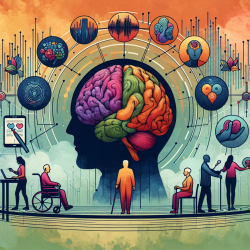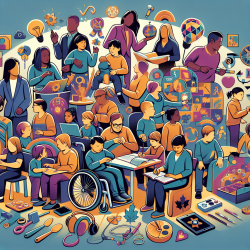Introduction
As the global population ages, the prevalence of Alzheimer's disease (AD) and mild cognitive impairment (MCI) is rising, posing significant health and social challenges. Early diagnosis is crucial for managing symptoms and planning care. Recent research by Yamada et al. (2021) highlights the potential of combining multimodal behavioral data—gait, speech, and drawing—to enhance the classification accuracy of AD and MCI, offering a promising avenue for non-invasive diagnostic tools.
Research Overview
The study investigated the integration of gait, speech, and drawing data from 118 participants, including those with AD, MCI, and cognitively normal (CN) individuals. The findings revealed that combining these modalities achieved a classification accuracy of 93.0%, significantly higher than using any single modality alone, which topped at 81.9%.
Significance of Multimodal Data
Each behavioral modality provides unique insights into cognitive impairments associated with AD. For instance:
- Gait Analysis: Variability in stride time correlates with executive function impairments.
- Speech Analysis: Pause durations during speech tasks relate to episodic memory deficits.
- Drawing Analysis: Drawing speed is indicative of global cognitive function.
These behaviors, when analyzed together, offer a comprehensive view of cognitive decline, enhancing diagnostic accuracy.
Clinical Implications
The integration of multimodal behavioral data into clinical practice could revolutionize the early detection of AD and MCI. The non-invasive nature of gait, speech, and drawing assessments makes them ideal for routine screenings, potentially improving diagnostic rates and patient outcomes.
Furthermore, this approach could support the development of computerized screening tools, reducing the reliance on specialist evaluations and facilitating broader access to early diagnostic services.
Future Directions
While the study provides compelling evidence for the benefits of multimodal data integration, further research is needed to validate these findings with larger samples and to explore the potential of real-world data collection. Future studies could also investigate the associations between behavioral characteristics and specific neuropathological changes, enhancing our understanding of AD progression.
Conclusion
Combining gait, speech, and drawing data offers a powerful tool for improving the accuracy of AD and MCI diagnoses. This data-driven approach not only aligns with the growing emphasis on personalized medicine but also holds promise for transforming clinical practices and improving patient care.
To read the original research paper, please follow this link: Combining Multimodal Behavioral Data of Gait, Speech, and Drawing for Classification of Alzheimer’s Disease and Mild Cognitive Impairment.










